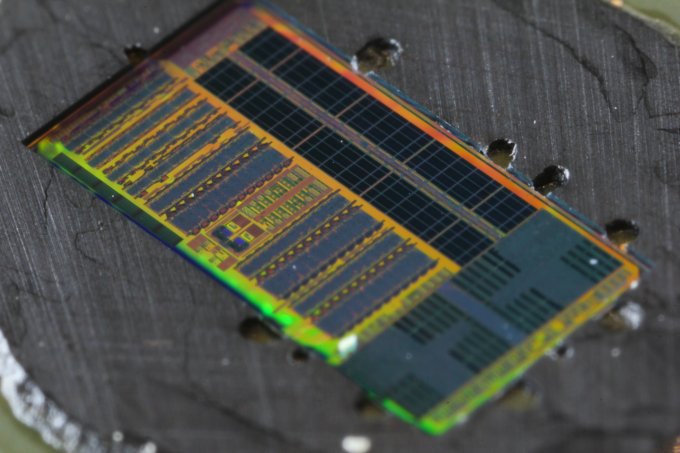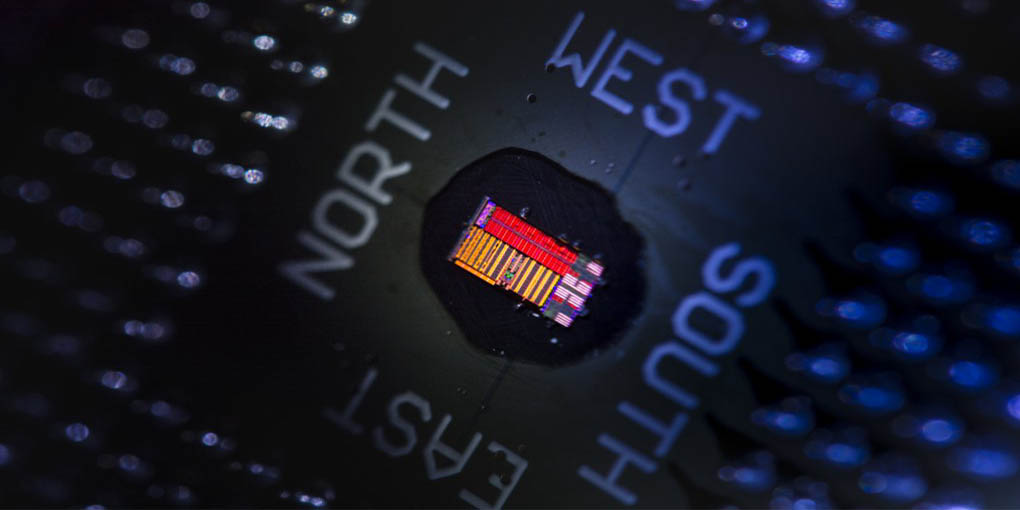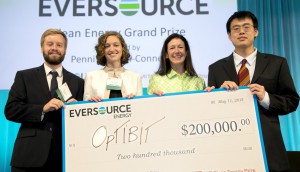
Researchers at the University of Colorado Boulder, University of California Berkeley along with Massachusetts Institute of Technology, have developed a groundbreaking microprocessor chip that uses light, as an alternative to electricity, to transfer data at very high speeds while consuming relatively very minute amounts of energy.
Conventional microprocessor chips—the ones present in every thing from digital watches, laptops, microwave ovens to supercomputers etc use electrical circuits to communicate with each other and transfer data. In recent times, however, the sheer amount of electricity wanted to power the ever-growing pace and volume of this data transfers has proven to be a limiting factor.
To overcome this impediment, the researchers turned to photonics, or light-based, technology. Sending data using light rather than electrical energy reduces a microchip’s power burden because light could be sent across longer distances utilizing the same amount of energy.

This cutting-edge processor is far more superior than standard electrical chips, having the ability to process three hundred gigabits per second per square millimeter (300 Gbps/mm2). In comparison with a typical processor, that is 10 to 50 times more data.
The new chip measures 6 by 3 millimeters, It retains state-of-the-art traditional electronic circuitry. It features 2 processor cores with 70 million transistors. Along with that, is has 850 optical input/output components, that are used to send and receive light.
- First, they can send data in multiple parallel data streams encoded on different colours of light over one and the same medium.
- The second benefit is that these chips can use infrared light, whose physical wavelength is shorter than one micron. To place that into perspective, that’s about one hundredth (1/100th) of the width of a human hair, which implies that much more components could be fitted onto a single chip.
- Another advantage of these light-based chips is that they’re much more energy-efficient, thus they are more environment friendly and can result in huge cost savings for data centers in their power bills.
“This is a milestone. It is the first processor that can use light to communicate with the external world,” stated Vladimir Stojanović, an associate professor of electrical engineering and computer sciences at UC-Berkeley who led the collaborative workforce in this research. “No other processor has photonic I/O in the chip.”
By combining the optical and the electrical circuitry on a single chip, the researchers anticipate that the new technology could be integrated into present manufacturing processes easily and scaled up for industrial production with minimal disruption.
“We discovered the way to reuse the same materials and processing steps that comprise the electronic circuits to construct high-performance optical devices in the same chip,” stated Mark Wade, a Ph.D. candidate at CU-Boulder and a co-lead author of the research study. “This enables us to design complex electronic-photonic systems that can solve the communication bottlenecks in computing.”
The new processor is much more superior than most electric processors that are presently available, however its potential has not been fully realized yet.

The research has resulted in two startups, one of which is the Ayar Labs (formerly known as OptiBit) which focuses on energy-efficient, excessive-volume data transfers. The firm was founded by researchers from CU-Boulder, the UC Berkeley, and MIT. Under its former name, they won the ‘MIT Clean Energy Prize’ sponsored by the US Department of Energy, in May, 2015.
Details of the new technology, which may pave the way for faster, extra powerful computing systems and network infrastructure, were published on 24th December in the journal Nature.
















































[…] workforce in this research. ?No other processor has photonic I/O in the chip.? Read more: Breakthrough: light-based microprocessor chip 50x faster* JDM cars rock! Bus duty khatum karo pls Reply With […]